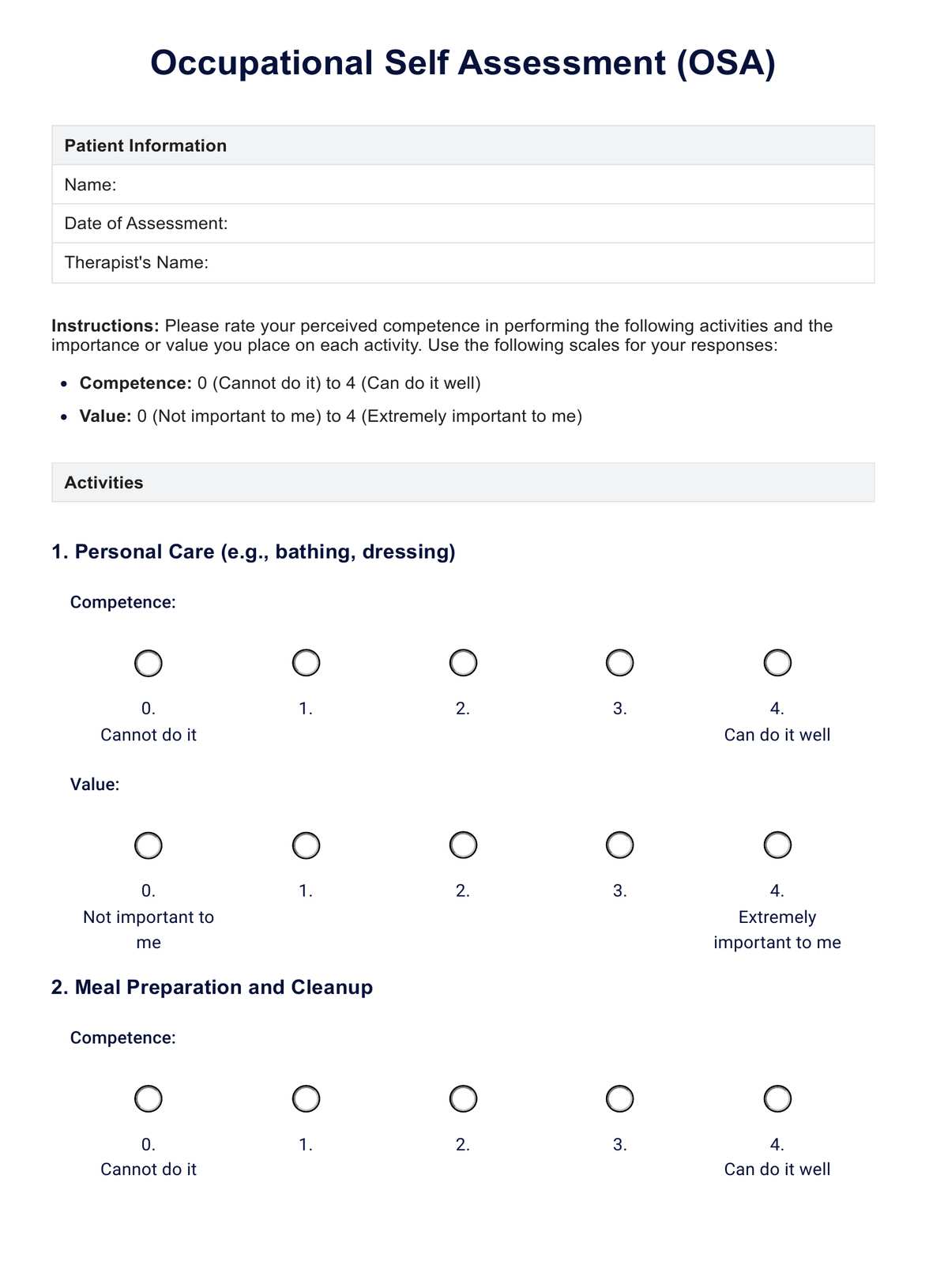The OSA should be administered at the beginning of therapy to establish a baseline and periodically throughout the intervention to track progress and adjust treatment plans.

Explore the comprehensive Occupational Self Assessment (OSA) guide with examples and a free PDF download.
The OSA should be administered at the beginning of therapy to establish a baseline and periodically throughout the intervention to track progress and adjust treatment plans.
Yes, the OSA is versatile and can be adapted for various age groups, including children, adults, and older adults.
While the OSA is a self-report tool, it can be adapted for clients with cognitive impairments, with modifications or assistance as needed.
EHR and practice management software
*No credit card required
Free
$0/usd
Unlimited clients
Telehealth
1GB of storage
Client portal text
Automated billing and online payments